One goal I had while living in Germany was to visit somewhere, anywhere in the former East, other than East Berlin. With it becoming increasingly unlikely that I'd have time to hit up Leipzig or Dresden that year, I decided to spend some time in Potsdam, which was a half-hour S-Bahn ride away from the center of Berlin. Potsdam was the site of a pivotal conference at the end of World War II, where Roosevelt, Churchill, and Stalin met to make plans for the future of postwar Europe. During the 41 years when there were two Germanies, Potsdam was part of East Germany, though right next to the walled-off West Berlin. Today it's practically a suburb of Berlin, and is the capital of the state of Brandenburg, which completely surrounds Berlin. Before WWII, Brandenburg included Berlin which was its historical capital.
This trip happened on Sunday, September 6, 2020.
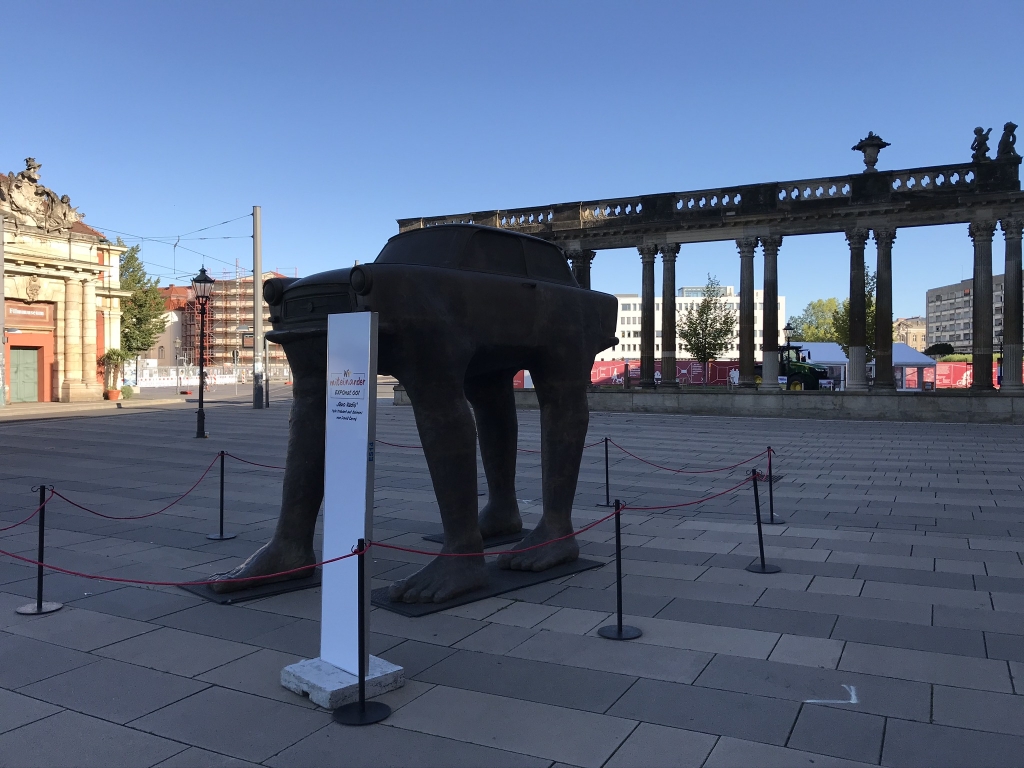
First thing I saw in Potsdam was this bizarre statue of a Trabant on legs.
Throughout the center of Potsdam were several displays devoted to Deutsche Einheit (German Unity), since the upcoming Reunification Day, October 3, 2020, represented 30 years of a reunited Germany. Most of them were put up by Germany's 16 states, each showing off what makes the state unique.
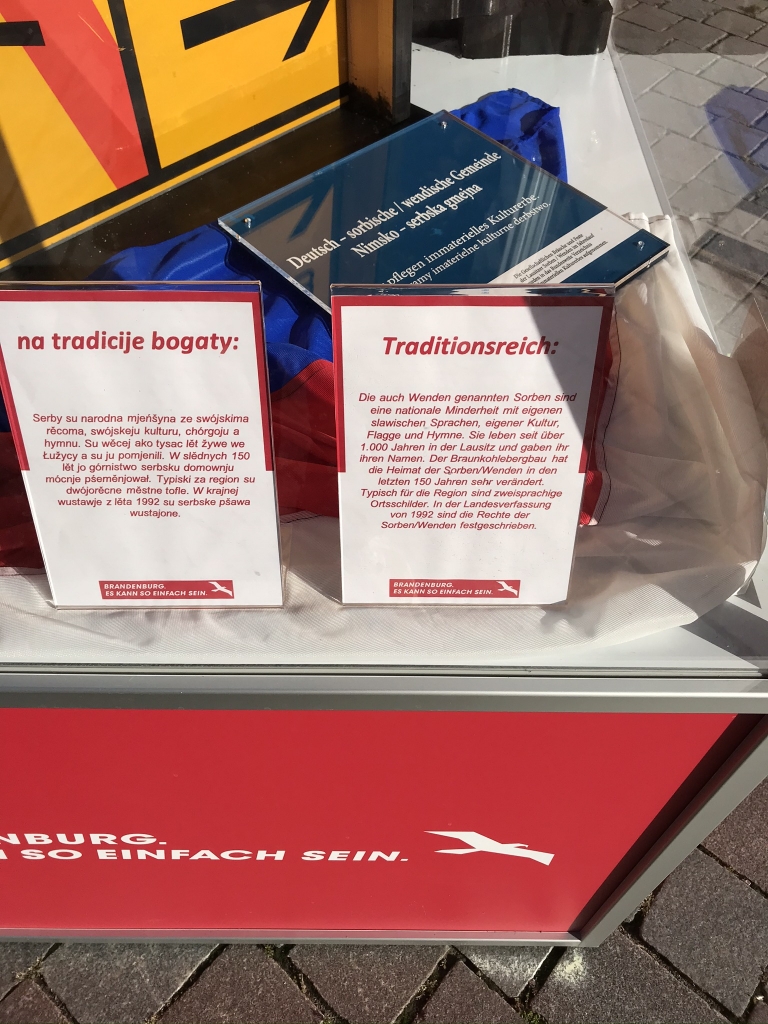
This was part of the Brandenburg display, the state of which Potsdam is the capital. What language is that on the left? It's Lower Sorbian, a Slavic language which is extremely similar to Polish. This part of the display is dedicated to the Sorbians, the indigenous people of Brandenburg, who were living here before the Germans moved in from the west. The sign says that they have their own language, culture, flag, and anthem, they've lived for over 1,000 years in a region called Lusatia (Lausitz), and their rights are guaranteed in Brandenburg's 1992 constitution. This Lusatia is in the southeast corner of Brandenburg and the neighboring part of Saxony, next to the Polish border, with Cottbus, Brandenburg being its biggest city.
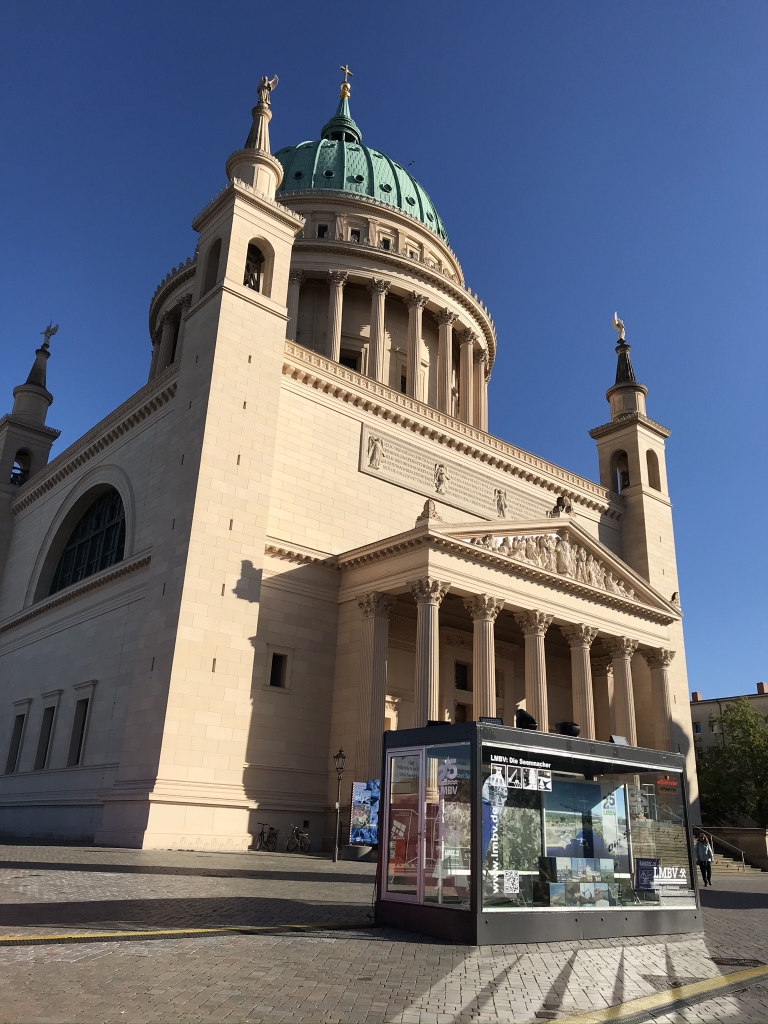
Display built by the Lusatian mining company LMBV in front of the St. Nicholas Church.
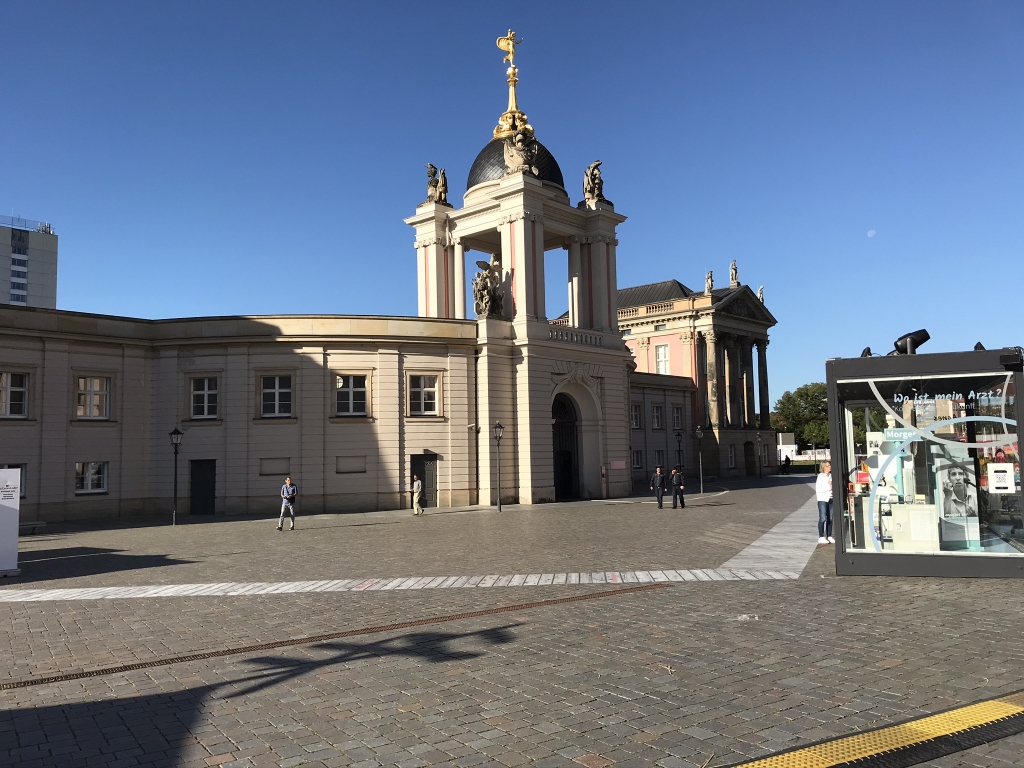
That building was once a summer palace of the kings of Prussia; now it's where Brandenburg's state parliament (Landtag) meets. Thus it serves the same function as our state capitol buildings in the US.
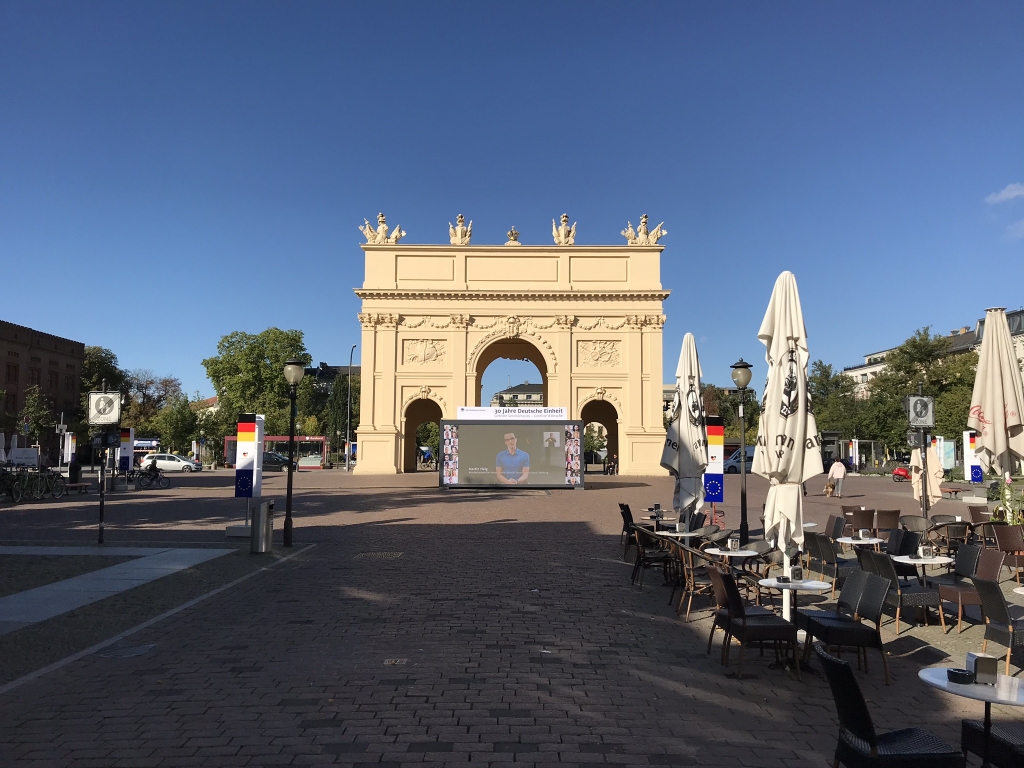
Potsdam also has a Brandenburg Gate, something to see even if it's not as impressive as Berlin's.
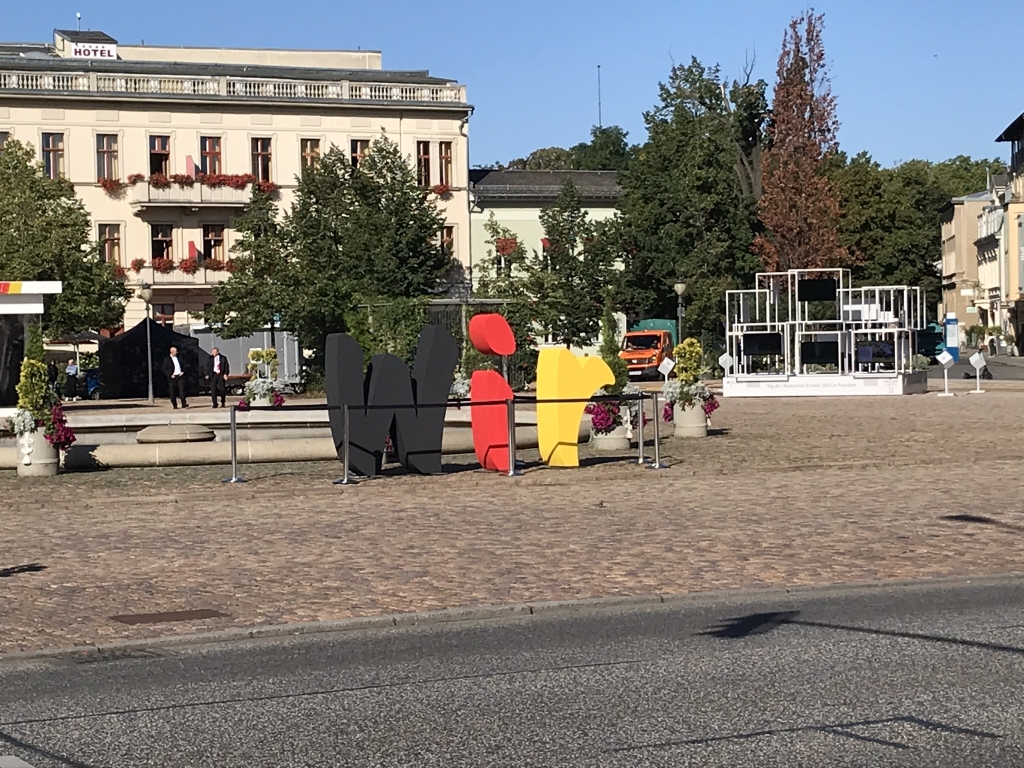
This is in Luisenplatz, beyond the Brandenburg Gate, where there were a lot of "30 years of German Unity" displays. That's the German word for "we"--Wir--in the colors of the German flag.
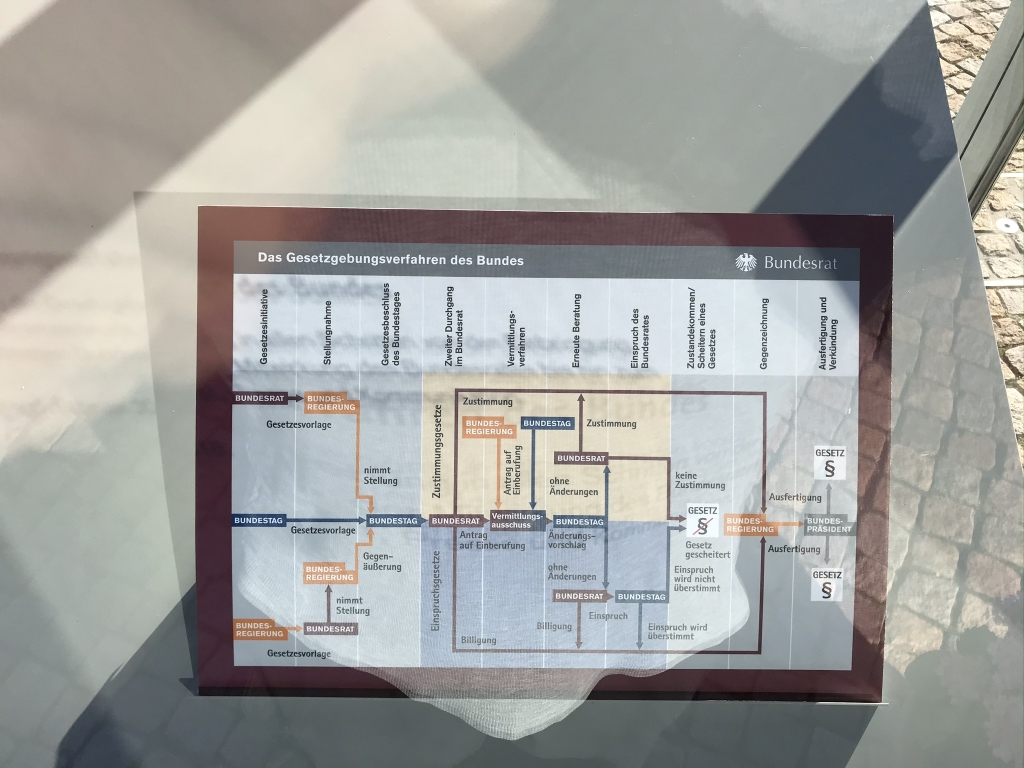
At one of the German Unity displays I found this screen, which shows how a bill becomes a law in Germany's parliament. (Is there a "Schoolhouse Rock" version of this?) In all those various stages the Bundestag (the lower house) and the Bundesrat (the upper house) discuss and debate the proposed law until they come to an agreement about it. After that, at the bottom, it's signed into law by the Federal President (Bundespräsident). Yes, even though the Chancellor is who you always hear about, Germany also has a President, directly elected by the people, though that person has about as much power as the UK's monarchs. That is, almost none; the President simply makes official all the laws passed by the Parliament. The Chancellor, meanwhile, being the leader of the majority party in the Bundestag, is analogous to a Prime Minister in other parliamentary countries and thus has the real executive power as head of government.
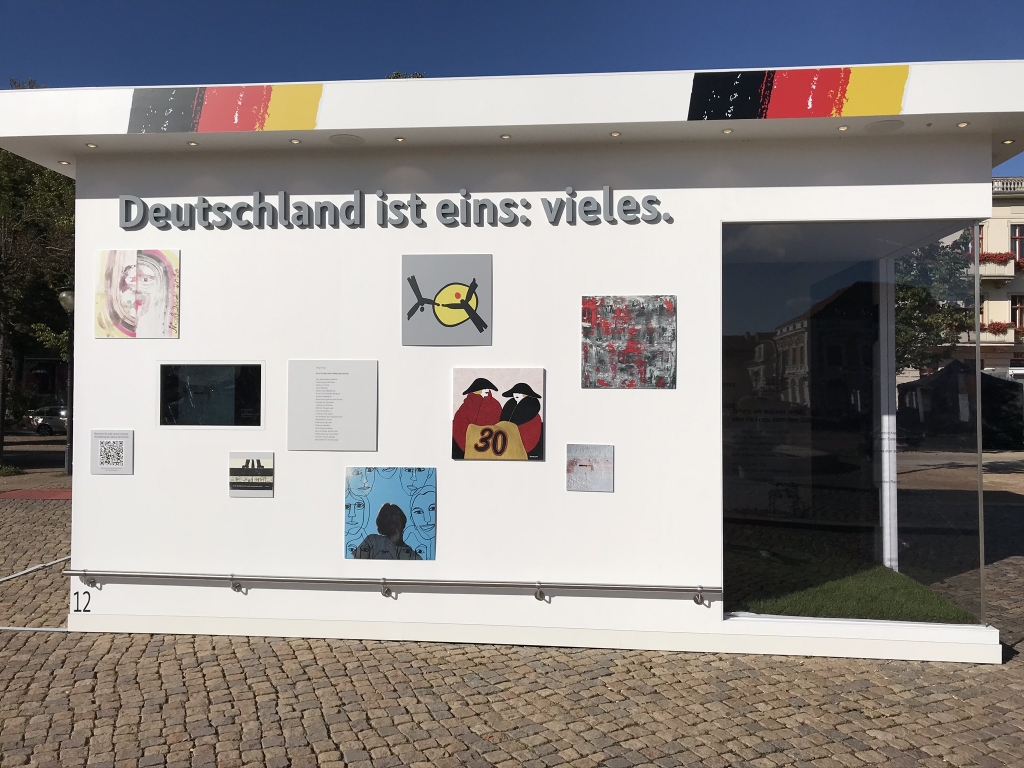
"Germany is one: many."
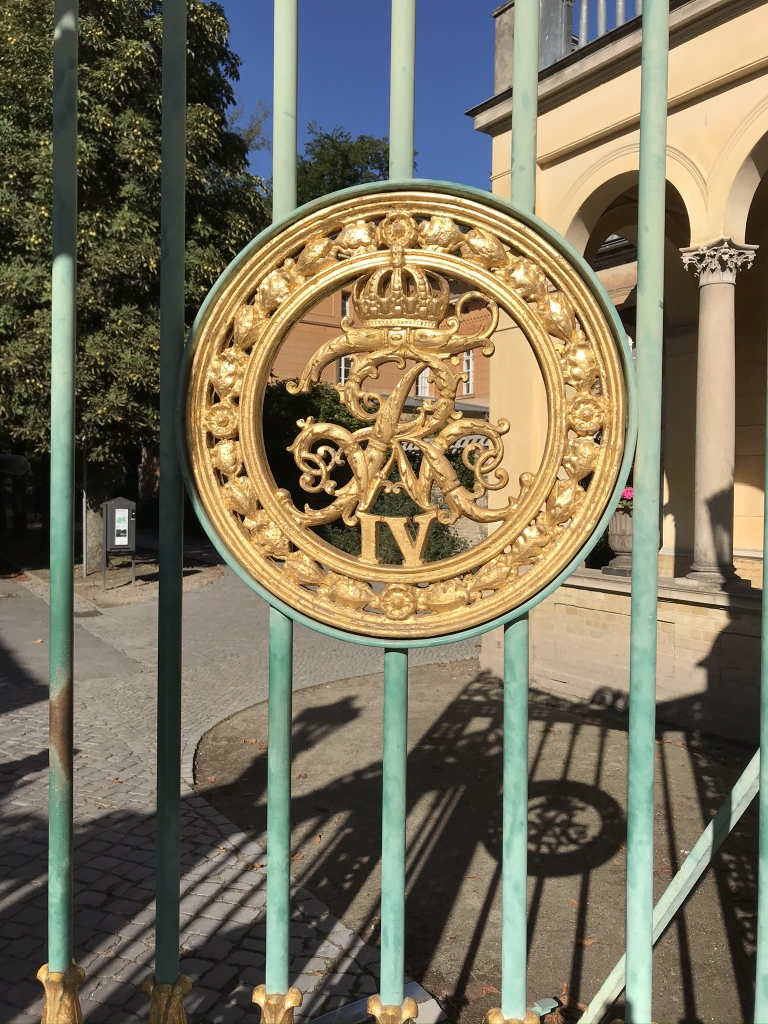
Now let's go for a little diversion. One of Potsdam's biggest attractions is Sanssouci Palace, which is a bit of a walk past this gate. There was no explanation given for the meaning of that royal monogram, but since Wiki says that the Prussian king Frederick William IV had some things built in the park, that's probably his seal. I can see an F and a W in there, and obviously a IV. There's also an R, perhaps that's for Rex, Latin for king? One sees that word a lot in European heraldry.
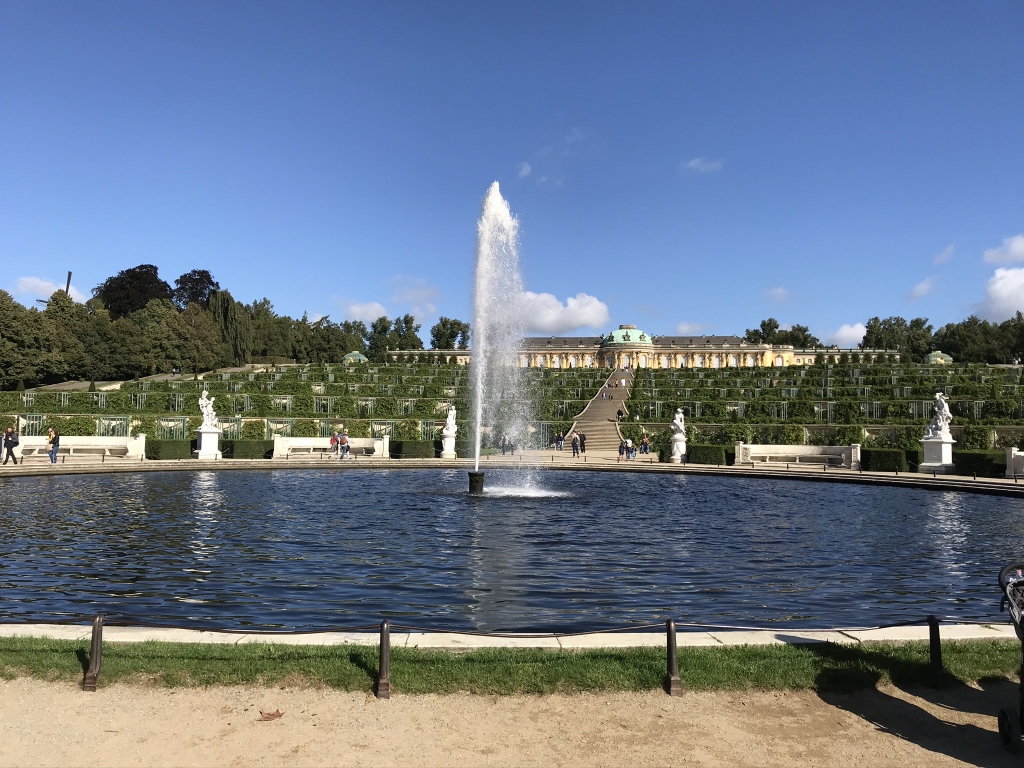
Beyond the fountain and the terraced gardens you can see Sanssouci Palace, which was built as a residence for the king of Prussia, Frederick the Great.
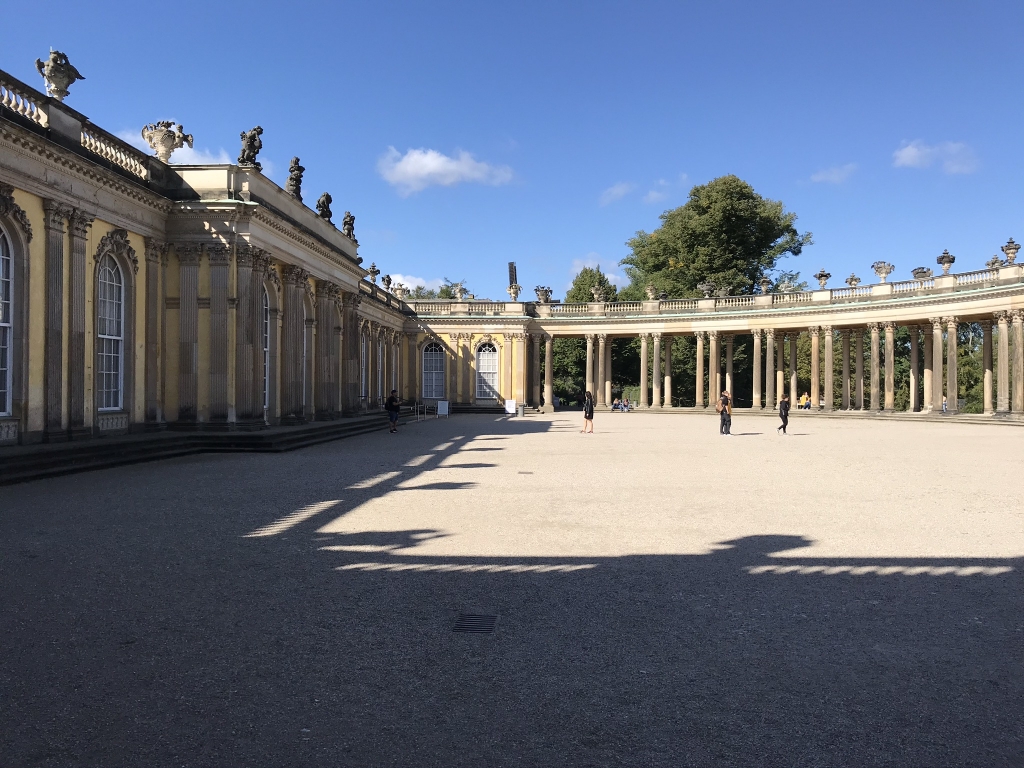
Behind the palace. The only way in is to take a guided tour, and when I asked when the next English-language tour was, I was informed it wouldn't be till 4:50. That was at noon. So, no thanks.
After looking around Sanssouci's gardens a bit more, I headed back into downtown Potsdam where I first looked for a place to eat lunch. I settled on a nice outdoor place called Café Alice. The food was great, I had a delicious Frikadelle which is a kind of meat loaf, but there were endless bees that wouldn't leave me alone. Were these those "murder hornets" I kept hearing about back then?
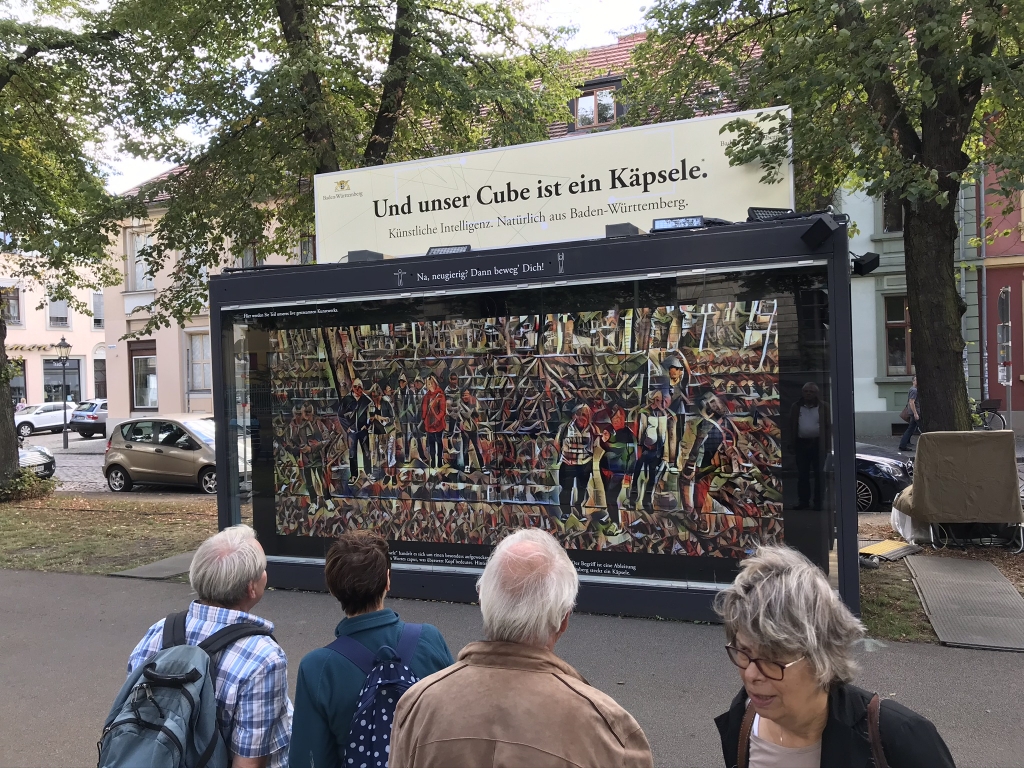
After lunch I hit up some more states' exhibits scattered throughout the city center. First I had to go to Baden-Württemberg's since that's the state I was living in at that time. The top line says "And our cube is a Käpsele." I think Käpsele is Swabian for "cube." The next line says "Artificial intelligence. Naturally from Baden-Württemberg." So here you stand in front of a green screen, behind me as I took this picture, and see a psychedelically-altered mirror image on the screen in front of you.
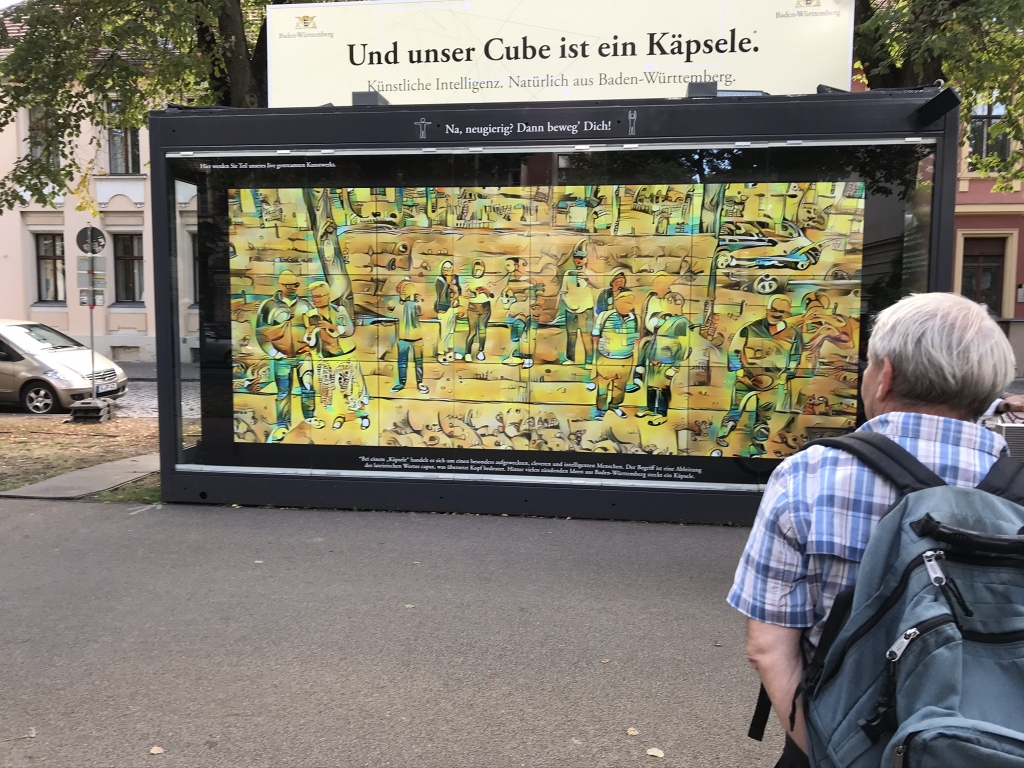
Can you see me in here?
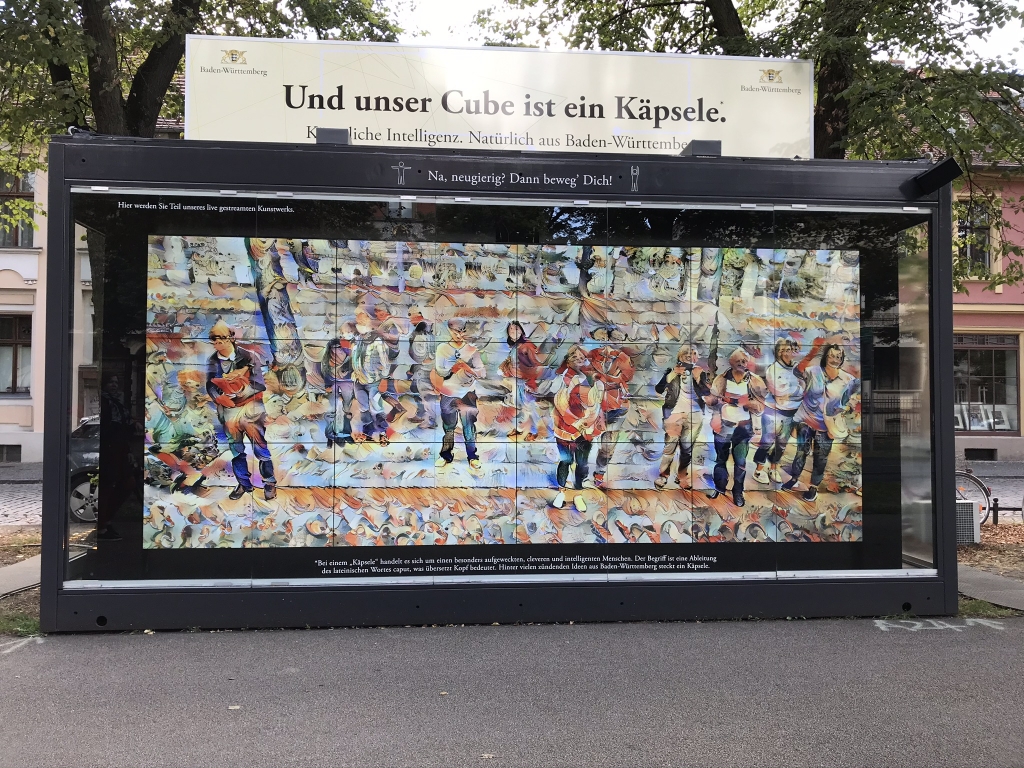
Here's another good one. The color schemes regularly changed.
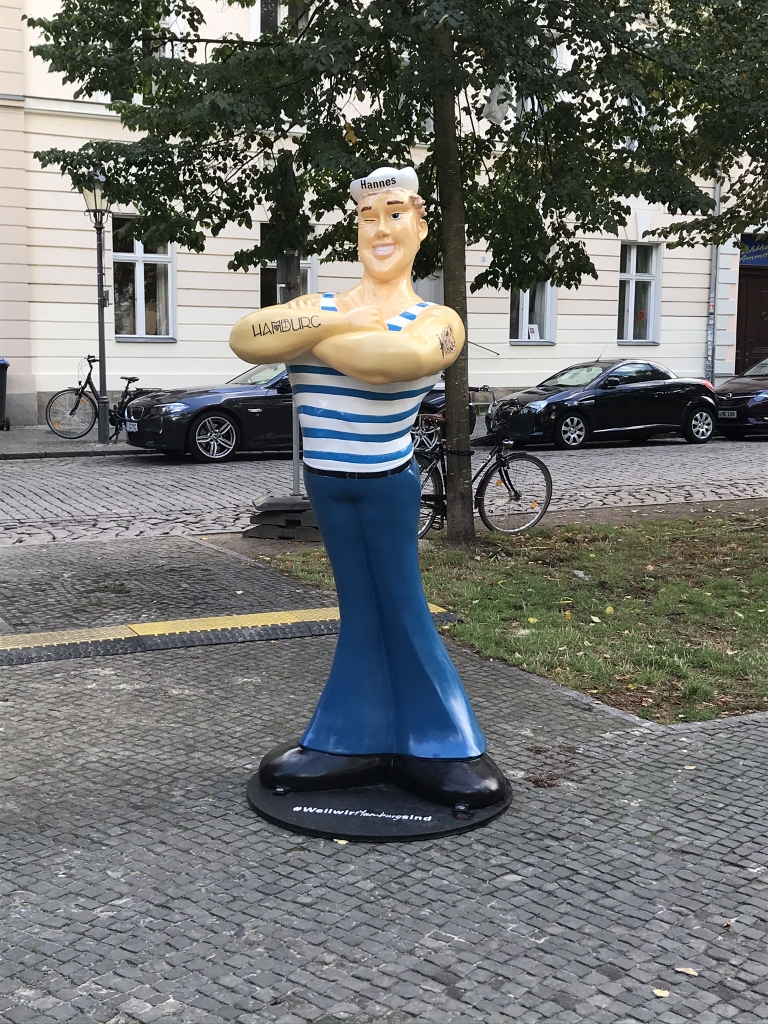
This is from Hamburg's display, since the city of Hamburg is also its own state. Hamburg is most famous for its history as a seaport.
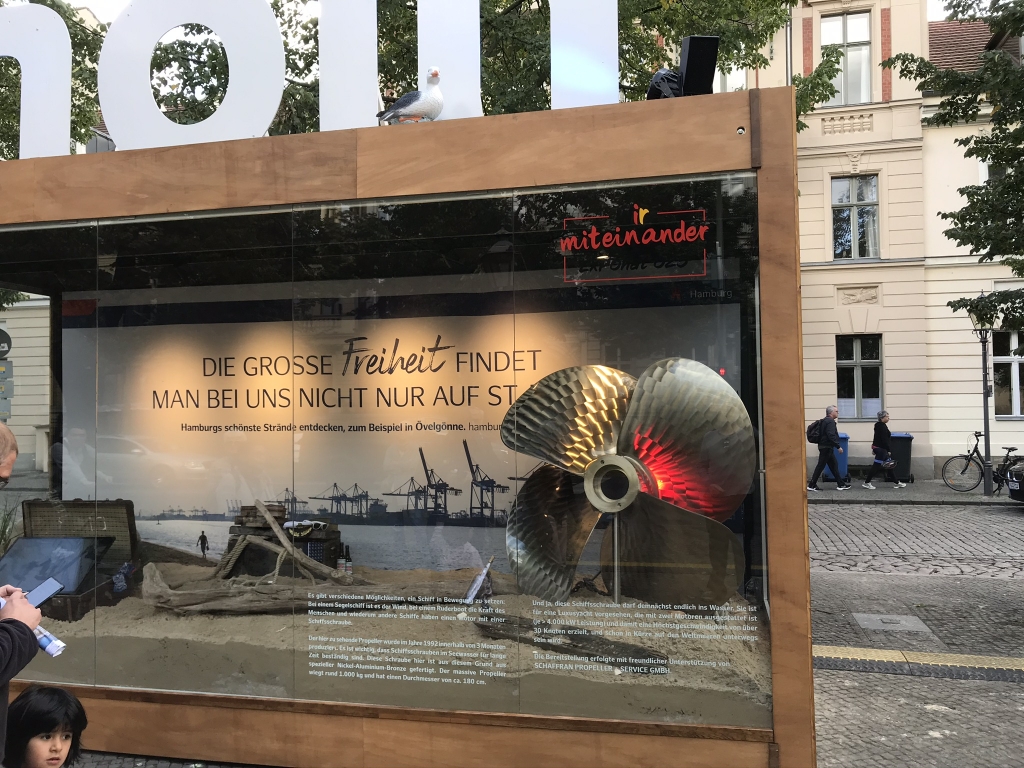
You can't see the whole thing, but that huge word on top the box is "moin." Being Low German for "hello" it's not only the most common greeting in Hamburg but it's also become something of a catchphrase used in advertising, kind of like "aloha" in Hawaii. The display in the case says "You'll find great freedom with us, not only in St. Pauli" which refers to the legendary street, Große Freiheit (Great Freedom) in Hamburg's St. Pauli neighborhood on which used to be several clubs where the Beatles used to play. What you see in the case is a diorama of two things that bustling seaport is known for: one of Hamburg's lovely beaches and a ship's propeller. The text says that the propeller was built in less than three months in 1992, it's made out of a nickel-aluminum-bronze alloy so that it can withstand being immersed in seawater for long amounts of time, it weighs 1,000 kg, and has a diameter of 180 cm.
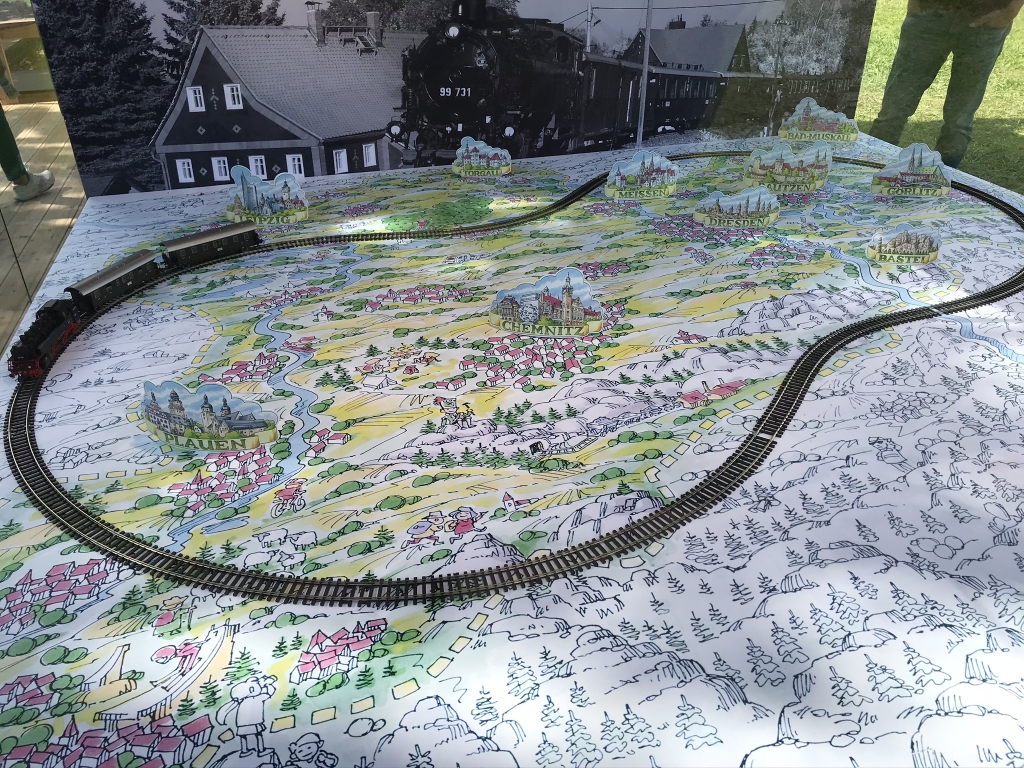
This one is from the state of Saxony, which is in the former East. I'm not sure why but this exhibit seems to have some kind of railroad theme. I wanted to visit some of the cities here, like Leipzig and Dresden, but I just didn't have time before I had to move back to the US.
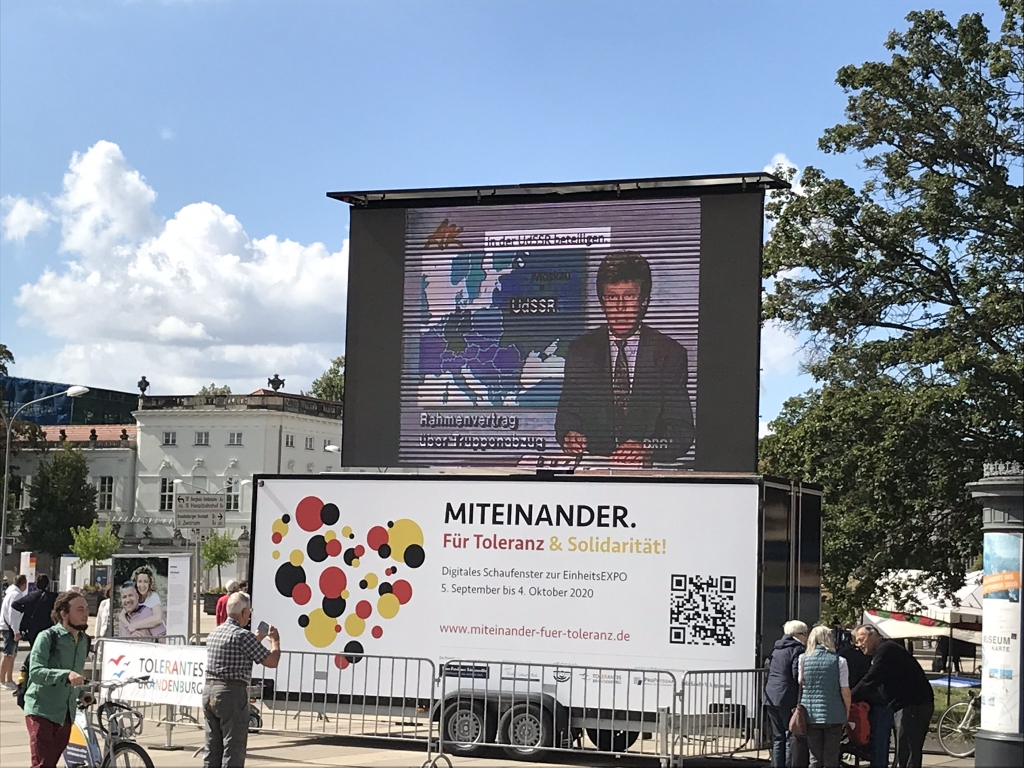
Finally a screen showing a vintage news clip covering one of the events that led to the fall of the Berlin Wall and the end of the Cold War.

